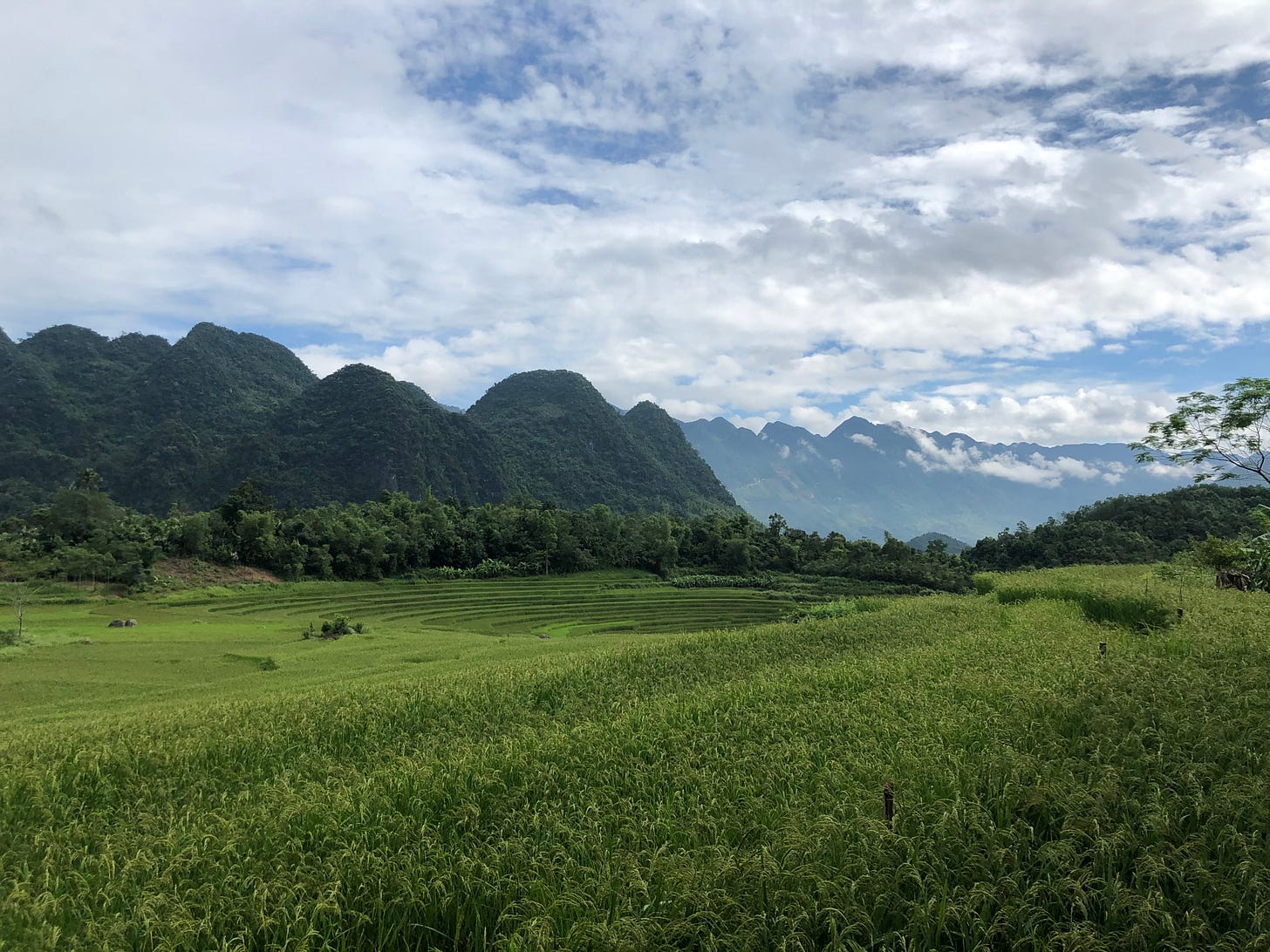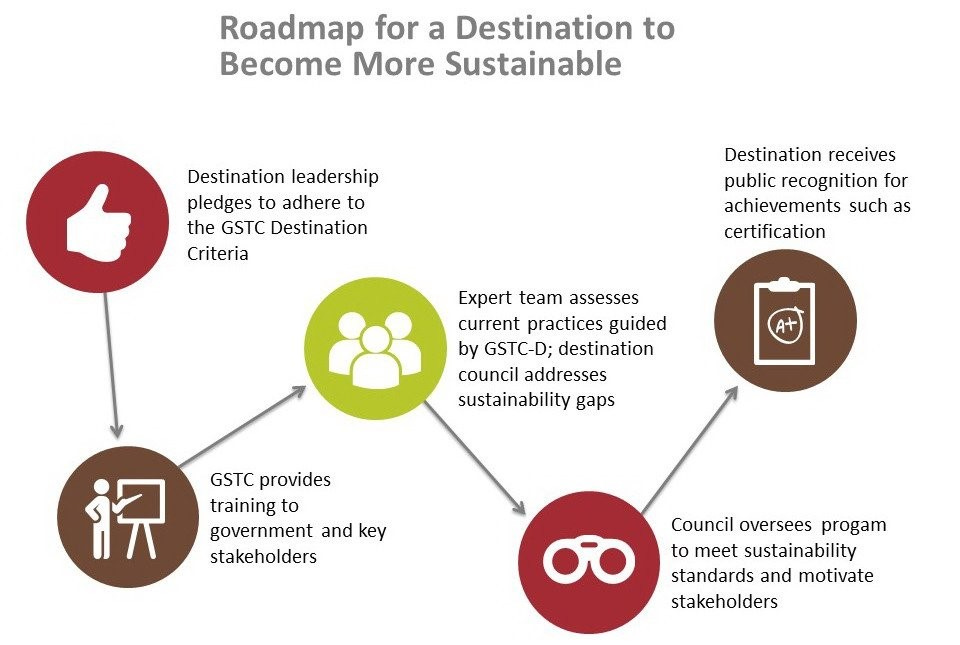Navigating the Tourism-Development Nexus
The Global Sustainable Tourism Council's Destination Criteria are the ideal tool to align tourism investments with impact criteria, and we are on a mission to see more development partners adopt them.
Welcome to another edition of Clickable Insights. Today we tackle tourism, a vertical that:
Comprises up to 20% of GDP in some developing economies.
Exerts significant influence over transportation and other infrastructure planning, urban development, heritage preservation and community protection, and natural capital.
Provides livelihoods to some of society’s most at-risk groups.
COVID-19 erased billions in tourism revenue around the world, (finally) prompting development agencies and donors to adopt a more intentional approach to tourism. Yet, project officers struggle to integrate tourism with institutional impact frameworks. The increasing emphasis on climate investments has only exacerbated the challenge.
Today’s newsletter introduces the Global Sustainable Tourism Council (GSTC) and its GSTC Destination Criteria (GSTC-D). As a GSTC member and training provider, Clickable Impact believes the GSTC-D provides a powerful framework for measuring and evaluating tourism interventions – one that we hope will accelerate development investment in tourism.
If you’re reading Clickable Insights through a forwarded email, be sure to sign up below.
What is the Global Sustainable Tourism Council (GSTC)?
The GSTC is an independent organization with a global membership including national and provincial governments, leading travel companies, hotels, tour operators, NGOs, individuals, and communities. Notable members include the Korean Tourism Organization, Booking.com, and the Singapore Tourism Board.
GSTC maintains global standards for sustainable travel and tourism known as the GSTC Criteria. There are three sets:
Destination Criteria for public policymakers and destination managers (we’ll focus on these below)
Industry Criteria for hotels and tour operators
MICE Criteria for Venues, Event Organizers, and Events & Exhibitions
The criteria fall under four pillars: sustainable management, socioeconomic impacts, cultural impacts, and environmental impacts. Development professionals can use these to unlock new opportunities for innovation in sustainability.
GSTC-D Criteria: A Blueprint for Sustainable Destinations
The GSTC Destination Criteria (GSTC-D) guides policymakers and destination managers in implementing sustainable practices. GSTC-D performance indicators align with the 17 Sustainable Development Goals (SDGs) and cover a broad spectrum of sustainable environmental, social, and governance practices.
The process begins with commitment. Destinations that commit to adhering to GSTC-D criteria receive training. GSTC also offers Destination Assessments designed to benchmark a destination’s sustainability, identify sustainability gaps, and recommend policies and practices for the destination management team’s consideration.
Destinations that successfully meet GSTC-D criteria can receive certification. GSTC does not itself certify destinations, but it accredits third-party certifiers.
Tourism destinations get significant benefits from certification, including attracting travelers who prioritize sustainability, better environmental and operational resource management, strengthened relationships with local communities, and enhanced visibility among donors and partners.
GSTC-D Catalyzes Impact
By applying sustainable environmental, social, and governance criteria to tourism destinations, and aligning them to the SDGs, GSTC-D acts as a catalyst for development impact including:
Economic Growth by encouraging sustainable business practices and supporting small and medium-sized enterprises (SMEs).
Environmental Conservation by emphasizing conserving natural resources and biodiversity while advocating for responsible land, water, and energy management.
Climate Change Mitigation by encouraging the monitoring, reporting, and reduction of greenhouse gas emissions through every step of tourism operations.
Cultural and Social Preservation by supporting the preservation of cultural heritage and social structures by encouraging respect for local traditions and promoting community-led initiatives.
Effective Governance by fostering stakeholder engagement, transparency, and effective monitoring.
Cross-Sectoral Impact in sectors such as agriculture, infrastructure, and public health. By aligning tourism development with broader sustainable development goals, destinations can leverage tourism as a driver of positive change, ensuring that the benefits of tourism are widely distributed and contribute to overall development.
Application of GTSC-D in Development Programs
We firmly believe that GSTC-D serves as the world’s most objective and robust framework for evaluating a tourism destination's sustainability. Moreover, it facilitates the alignment of governance with the long-term aspirations and goals of the destination. It warrants integration into the design and monitoring framework of any development program or investment that aims to make tourism more sustainable.
Some agencies including UNDP and the Asian Development Bank are already integrating the GSTC-D criteria into development projects. UNDP is implementing a green destination model informed by GSTC-D in two destinations in Türkiye. The initiative focuses on energy efficiency, renewable energy, water-saving measures, and waste management.
ADB has incorporated the GSTC-D criteria into its ecotourism strategies including a pilot project in Malaysia’s Mantanani Islands, where ADB and the BIMP-EAGA subregional cooperation framework prepared a stakeholder-based tourism strategy to achieve sustainable marine and terrestrial environmental management, enhanced living standards for the local community, strong community participation in the tourism supply chain, well-developed supporting economic and social infrastructure, and manageable daily visitor volumes.
We welcome more destination development initiatives investments informed by GSTC-D criteria.
Clickable Impact: A Development-Focused GSTC Member and Trainer in Southeast Asia
Clickable Impact is a proud GSTC member. Our membership provides us access to GSTC’s extensive capacity development benefits, including a network of experts, destination resources, exclusive webinars, and case studies. These insights and proven strategies power our GSTC Sustainable Tourism Training Program for tourism businesses and inform our advisory services to governments, destination managers, and development partners.
Thanks to Clickable Impact consultants Graham Harper, Trevor Weltman, and Mike Tatarski for their contributions to this newsletter.
Back soon with more developments in climate action, transformative innovation, and sustainable tourism.
Clickable Insights is brought to you by Clickable Impact
Clickable Impact is an Asia-based consultancy committed to climate action and sustainable development. We have three practice areas: public affairs and communications, sustainable tourism, and transformative innovation. Across our work, Clickable Impact favors projects that urgently mobilize private sector engagement, policy action, and investment.
In other editions of Clickable Insights, you will find perspectives on agriculture, cleantech innovation, private sector engagement for sustainable development, and green finance across Asia and the Pacific. Visit our Substack to read editions by the topics most important to you.
All views expressed in this newsletter are our own.
Copyright © 2024 Clickable Impact, All rights reserved. You are receiving this email because you opted in via our website.
Our mailing address is:
House 20A, 11/5 To Ngoc Van, Quang An, Tay Ho
Hanoi, Hanoi 11207
Vietnam




